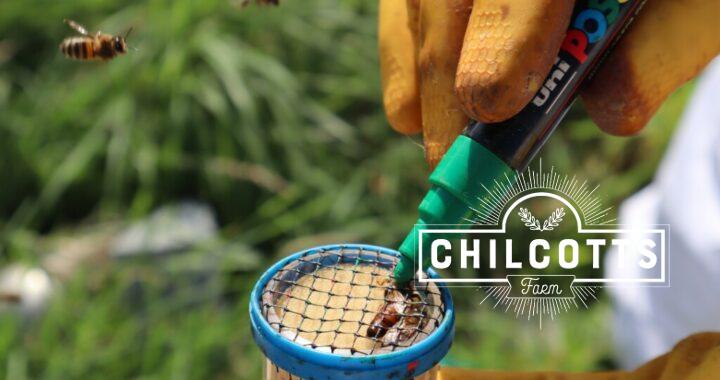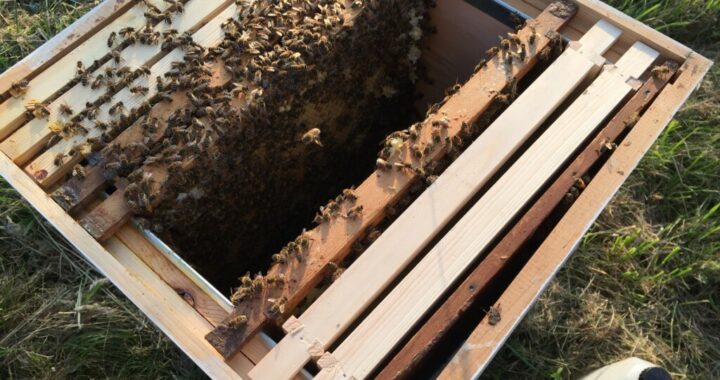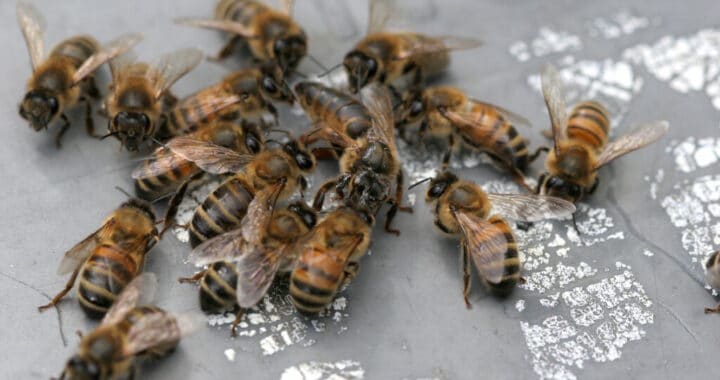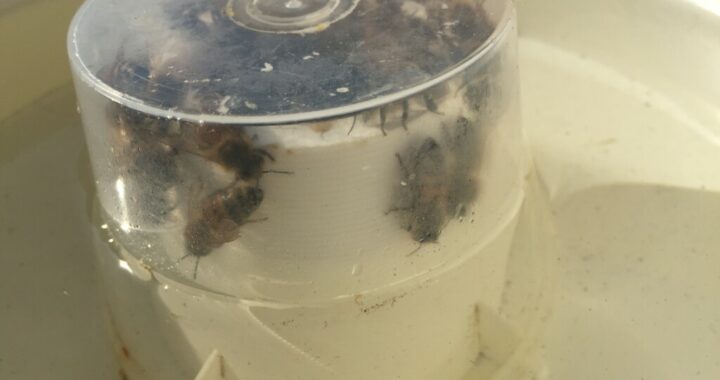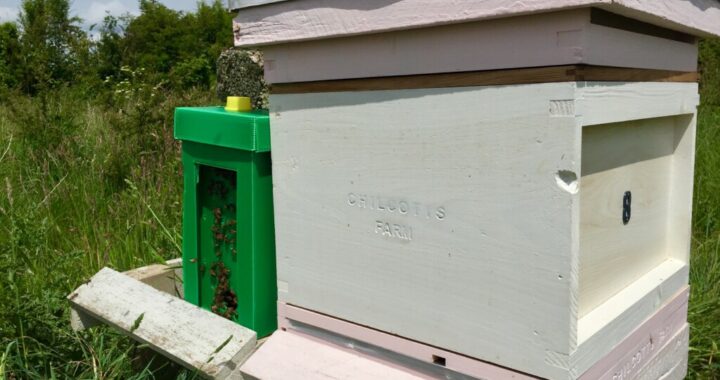This year, the bees seemed to have produced a large amounts of propolis, which has made working the hives quite difficult.
Bees use this to seal up small holes and gaps in the hive. Quite often the small gap between the frames are glued together making inspection a bit harder as the frames have to be unstuck and the propolis scrapped off.
Proplis is a product of bee saliva, wax and tree resins. It is meant to have anti-bacterial and fungal properties and can be found in the use of health and healing products.
This picture was taken on a warm day when the propolis was really sticky and flexible. When colder it can become quite brittle. The picture shows the propolis after I had scrapped it off the top of a frame. The frame was stuck to the crown board (a board that covers the top of the frames).



